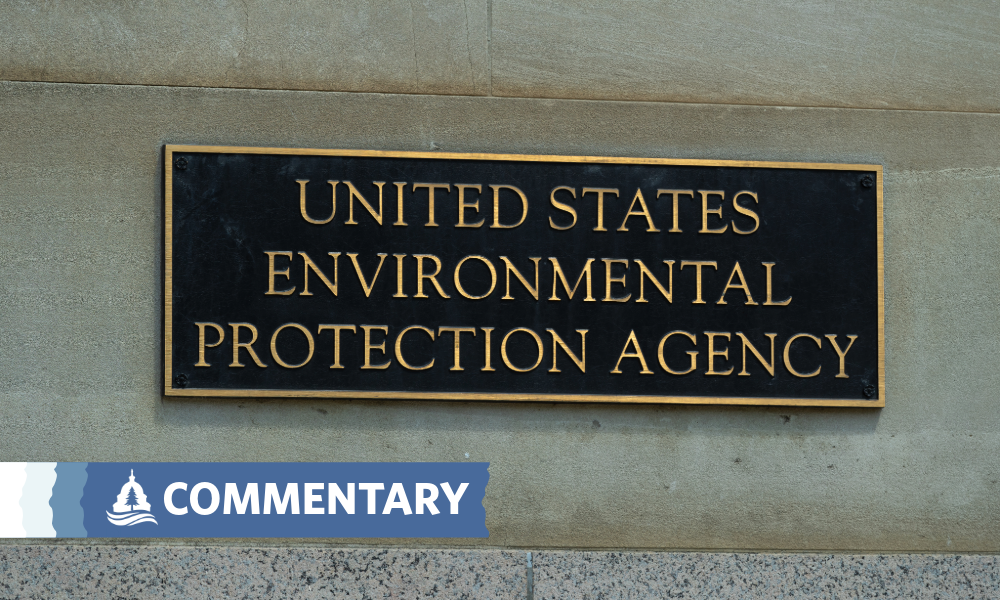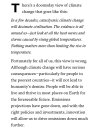It can be safely said that the EPA, in this decision, is committing crimes against humanity. The future will hold Trump accountable for attacking climate science, and for committing crimes against the human race, as well as crimes against all life on planet Earth.
The proposal to repeal the endangerment finding is part of a concentrated effort by the Trump administration to abandon science in favor of a political agenda.

peer.org
The Environmental Protection Agency (EPA) relied on shaky science and shady tactics to propose revoking its landmark greenhouse gas endangerment finding. Greenlighting the rescindment would be detrimental to public health and signal the erosion of science-backed decision making at our federal agencies.
Concerns about how EPA arrived at its
proposed rule were echoed in many of the 380,000 public comments recently submitted to the agency, including PEER’s, and by hundreds of speakers who participated in public hearings on the rule.
Backdoor Convening of Climate Working Group
In March, Department of Energy (DOE) Secretary Chris Wright handpicked a group of five scientists to put together a climate study. They all had one thing in common: a history of countering scientific consensus on climate change.
Over the course of a few months, the group secretly authored a
reportconcluding that climate change linked to greenhouse gases is less harmful than previously believed.
The report was cited over 20 times in EPA’s proposal to rescind the endangerment finding, despite it being hidden from the public eye and scrutiny up until that point.
A
lawsuit filed by environmental groups alleges that this irregular secrecy violated a Federal Advisory Committee act mandating transparency from groups engaged in policymaking. In response, DOE disbanded the group to “invalidate” the lawsuit.
Using a hushed report to justify reversing a finding that will impact the entire globe demonstrates agencies’ abandonment of transparency to quickly advance an agenda. This is further evidenced by EPA suggesting that it might use
artificial intelligence to read and respond to public comments, with little explanation on how the technology will be factored into review and decision making.
The People Behind the Controversial Report
Through
cherry picking data and
misrepresenting studies, the DOE report basically puts Groucho glasses on industry talking points and calls it science. It comes as no surprise, then, that some of the scientists downplaying the effects of greenhouse gas emissions have ties to the industries regulated under the endangerment finding.
Among the group is Steven Koonin, former Chief Scientist at the oil and gas company BP–a company that has been sued for deceiving the public about climate change. It also includes Judith Curry, who publicly acknowledged receiving funding from the fossil fuel industry for consulting services.
It’s also worth noting that the group was carefully chosen by Secretary Wright, a well-known fossil fuel entrepreneur and founder of the multibillion-dollar fracking company Liberty Energy. The report’s blessing on greenhouse gas emissions conveniently coincides with the Trump administration’s active halting of wind and solar energy projects in order to weaken renewable alternatives and bolster the fossil fuel industry.
Undermining Scientific Integrity
The proposal to repeal the endangerment finding is part of a concentrated effort by the Trump administration to abandon science in favor of a political agenda.
While Secretary Wright claims that the DOE report pushes back on the “cancel culture Orwellian squelching of science,” the truth is that it strategically ignores overwhelming
scientific consensus. Ironically, his statement comes at a time when agencies are punishing employees for expressing dissent and demanding scientific integrity.
As PEER
commented, rescinding the endangerment finding on the basis of flawed scientific evidence is antithetical to the reasoned decision-making required by the Administrative Procedures Act. It’s like choosing to cross a bridge after 97% of engineers say it’s structurally unsound just because five engineers say it’s not that bad.
Finalizing the rescindment, as EPA intends to, would harm public health, jeopardize infrastructure and investments, and discredit the missions that our scientific agencies are tasked with carrying out on behalf of the American people.








